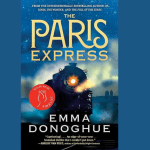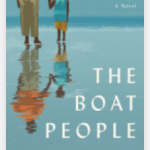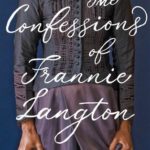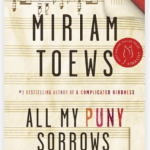 The Last Train to London by Meg Waite Clayton
The Last Train to London by Meg Waite ClaytonMy rating: 4 of 5 stars
Imagine ripping your clinging, crying child out of your arms to put her or him on a train full of other upset children who are being shipped off to a strange land, far away, where they know nobody and can’t speak the language. Worse still, you know you’ll probably never see them again. This was the difficult, but lifesaving, decision made by thousands of Jewish parents in Germany and Nazi-occupied territories in the 1930s. Meg Waite Clayton’s moving novel, The Last Train to London, brings that horrific scenario to life. Like so many historical novels I’ve read recently, it also brings home the frightening parallels between the xenophobia directed at refugees these days (“they’re eating the dogs” quoth Trump), the resurgence of antisemitism, and how the world tried to downplay Hitler’s threat for years while he grew increasingly powerful by demonizing Jews.
The Last Train to London focuses on the lives of three protagonists. One of them, the real-life Geertruida Wijsmuller-Meijer (aka ‘Tante Truus’) was a Dutch woman who started smuggling children from Nazi Germany to safety in the Netherlands as early as 1933. After Kristallnacht in 1938, she rescued Jewish orphans wandering alone in the forest near the Dutch-German border. The first one she literally hid under her skirt to get him out of Germany. Ultimately, she was sent to Germany officially to negotiate with Eichmann to allow the removal of Jewish children from German-occupied lands to England on what became known as the Kindertransport. Her efforts, directly and indirectly, led to saving over 10,000 children, most of whose parents were murdered by the Nazis.
The novel’s other protagonists are a teenage Jewish boy and aspiring playwright, Stephan Neuman, and his friend and math genius, Žofie-Helene. Žofie was not Jewish, but her mother was imprisoned because she ran an anti-Nazi newspaper, and it ultimately became too dangerous for the family to stay. The protagonists are composites of actual children on the Kindertransport. Other children saved by the Kindertransport include well-known Canadian journalist Joe Schlesinger (originally Czechoslovakian), sex talk-show host Dr. Ruth Westheimer, and many leading professors and researchers.
Part of my upcoming novel, Red Rules, is set in New York in the 1910s, when that city was experiencing a huge influx of East European refugees. Then, as with today’s refugees, there were many Americans who looked at these impoverished, uneducated migrant masses and saw them merely as potential criminals and vectors of disease. Yet within a generation or two, most got educated, became middle-class (or beyond), and contributed enormously to the economic and intellectual life of the country. The same can happen with the bulk of today’s refugees, as long as they have access to a good public education (where they are exposed to modern, secular values), health care, and opportunities to integrate. You can’t stop people from trying to create a safer, better future for themselves and their families. Nor should you want to, because ultimately it benefits us all. Novels like The Last Train to London help remind us of the humans behind the refugee tide.
View all my reviews





I’m adding The Last Train to London to my “books to read” list right now! I loved The Postcard and look forward to reading your review of it. Have you read The Safekeep, by Yael Van Der Wouden?
Thanks for the comment Ellen. I’ll add that to my reading list!